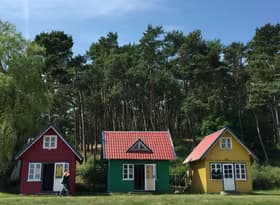Wide regional variations in residential building
Residential construction activity has held up much better than expected since the economy went into lockdown in late March. Some areas have seen a strong burst of activity, but others have seen a softening in anticipated building levels. This article explores some of the emerging regional trends in consent numbers, with detailed regional forecasts of activity available as part of our Regional Construction Outlook.
Cheap money flows into housing
The latest data from REINZ shows the housing market booming, with sales in the three months to October up 33% from last year – the fastest growth since 2015. Price growth reached a four-year high of 14%pa, with Canterbury, Otago, and Southland the only regions not to record double-digit house price inflation.
But trends in residential construction activity across the country are less uniform. Since COVID-19 hit, dwelling consent numbers have taken off in some regions, while others have been more subdued. Chart 1 shows the change in consent numbers for selected regions over the last six months compared with the April-September period in 2019, with some regions up and others down.
Chart 2 drills down further into the data for selected territorial authorities and Auckland local boards.
Unpicking the regional trends
Townhouses lead the charge for densification
Auckland’s annual consent total has now surpassed last December’s record high. Townhouses have been the dominant feature of recent growth, with Auckland’s Unitary Plan facilitating densification as developers reduce the land area and cost associated with each dwelling. However, a lot of the townhouse construction is also occurring in greenfields developments in the more outlying parts of the region.
Apartments falling out of favour
Weakness in apartment consents is prevalent across much of the Auckland region. Apartment consents were starting to come off the boil even before COVID-19, but demand has been further undermined by the hit to foreign student numbers, a shift in working habits and living preferences caused by the lockdown, and the effect on the Airbnb market of the border closures and loss of international tourism. These factors, to varying degrees, have also caused reductions in apartment consent numbers in other parts of the country, including Waikato, Bay of Plenty, Wellington, and Queenstown-Lakes.
Rising Auckland supply limits neighbouring growth
Auckland’s ongoing increase in the supply of housing is weighing on activity in the surrounding regions of Northland, Waikato, and Bay of Plenty. These regions had benefited from the spill-over effects of strong demand for housing in Auckland throughout much of the last decade.
Late bloomers still growing
Several provincial areas, which entered the housing boom later, are still experiencing strong growth in consent numbers. Hawke’s Bay, Manawatū-Whanganui, and Tasman are the most prominent examples of this trend.
Building activity in Canterbury is being boosted by the fastest house price growth since the post-quake rebuild. Christchurch’s growth in consents has been underpinned by a lift in townhouse numbers, while Selwyn is the location of choice for people wanting a standalone house.
Economic hit knocks southern building activity lower
Activity in Otago has already been cramped by COVID-19. In the September quarter, rents in Queenstown-Lakes were down 17% from a year ago, and house prices have dropped 4.3%. Both apartment and house consents are coming under pressure in Queenstown-Lakes, but townhouse consents have held up well to date.
Retirement operators push pause, for now
Retirement unit consent numbers have dipped substantially across many of the main centres, including Auckland, Hamilton, the wider Wellington urban area, and Christchurch. Several of the major retirement village operators temporarily paused their development plans earlier this year in response to COVID-19. However, activity is likely to regather momentum in 2021 as the population continues to age and demand for these facilities remains strong.
Looking to the future
Our Regional Construction Outlook provides forecasts of consents and building activity across both residential and non-residential construction over the next five years. These forecasts are available at a city and district level, with activity in Auckland also split into 13 wards. We are also able to set up customised areas for clients to provide forecasts that line up with their sales regions. If you’d like to know more about our Regional Construction Outlook, or you’re an existing subscriber who would like customised areas set up, please contact Gareth Kiernan.

















